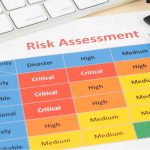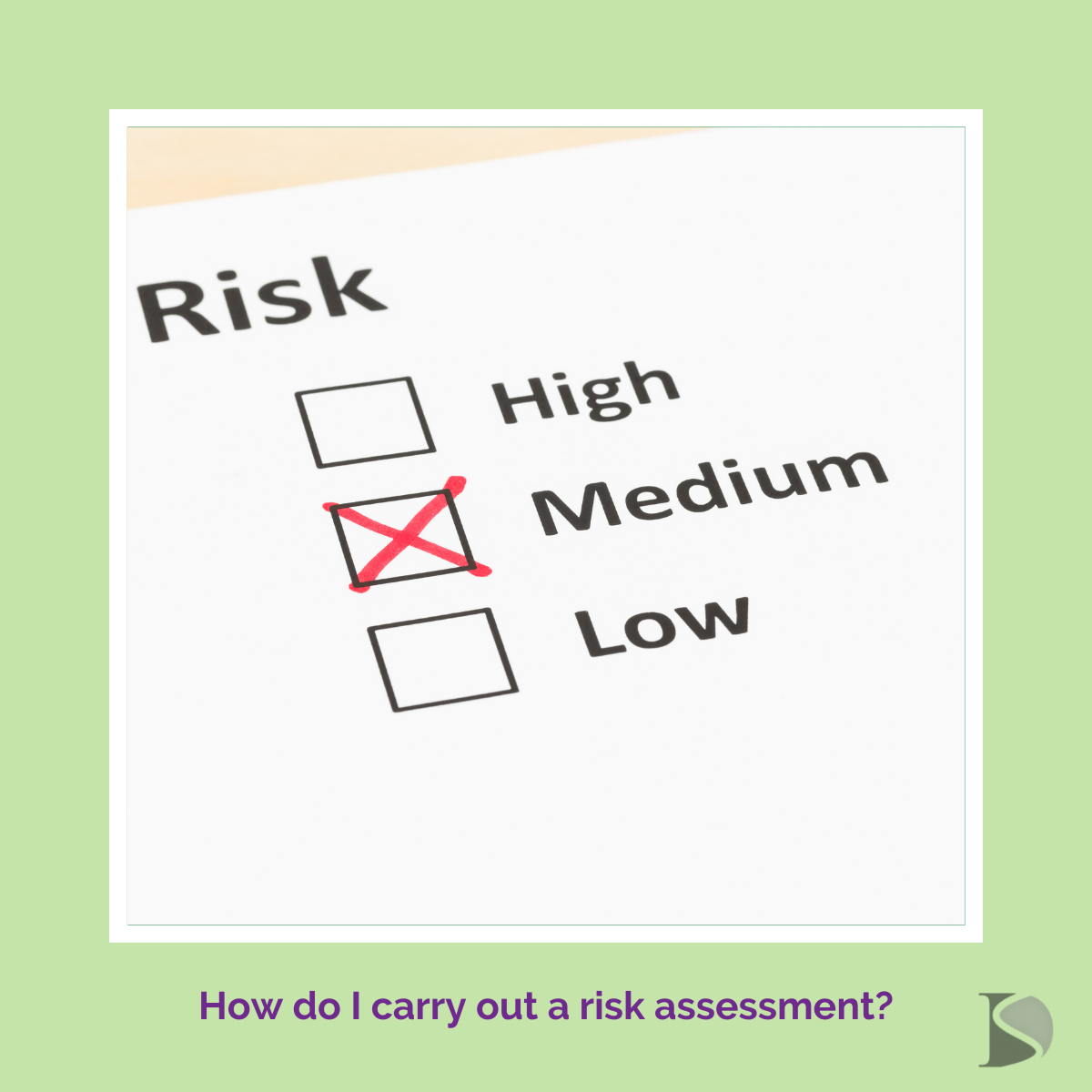“How do I carry out a risk assessment? “
“Can I do it myself, or does a health and safety person need to do the risk assessment?”
“Do I really need a risk assessment?”

These are three questions that I get asked quite frequently. I’ll deal with them in reverse order:
3. Yes, you probably do need a risk assessment. But the good news is it shouldn’t be a challenging exercise, its just a matter of thinking about what you are doing and how you are going to do it safely.
2. Yes, very often you can do the risk assessment yourself. It is preferable for the people who know the work and are familiar with the tasks in hand to carry out risk assessments, rather than somebody who hasn’t got the right experience for an assessment to be suitable and sufficient. Oftentimes risk assessments are carried out by people familiar with the tasks with additional support from a health and safety professional.
1. There is a well established process for carrying out all risk assessments. The actual content of the risk assessment will change depending on the nature of the assessment what is being looked at, but the simple 5 steps to risk assessment holds in all cases. Check out the types of risk assessment you might need here.
Why do I need to carry out a risk assessment?
A simple answer to this question is because the law requires you to! The Management of Health and Safety at Work Regulations 1999 say that we have to make a suitable and sufficient assessment of risks, and reduce those risks so far as is reasonably practicable.
There’s a couple of phrases in the above paragraph that we need to understand:
suitable and sufficient – this means that you need make a proper check to identify and deal with all risks, you need to consult with the people affected, you need to put controls in place to reduce the risk so far as is reasonably practicable. Remember you are only expected to identify foreseeable risks.
so far as is reasonably practicable – in the vast majority of cases, we are required by law to reduce the risk to a level that we are happy to live with, rather than to the absolute lowest level of risk that can be technically achieved. This means when deciding our risk control measures, we need to balance the overall reduction in risk against the time, cost and trouble in putting the risk control measure in place. In reality, if something is mega-expensive to do, causes a huge amount of trouble and the risk reduction after the control is put in place, we can argue that it would not be reasonably practicable to do so. I’ll explore this concept further in a future article, but for now check out the HSE page on this subject.
From a practical sense, we carry out risk assessments so that we can methodically think through a job or situation, and put things in place to keep people safe. When done correctly a risk assessment is a great planning tool, and guides your working methods and procedures. Risk assessments are carried out by everyone in their everyday life, just think about crossing the road – the green cross code is one of the first formal risk assessment that we all learnt as kids.

What are the five steps to risk assessment?
Before we deep dive into carrying out a risk assessment, we first need to define what we are assessing. I like to think about this as setting the boundary’s of the assessment, specifying what the assessment covers and limiting how far the assessment goes.
The key things to understand and specifiy are:
- the location where the work is carried out
- the people who may be affected (workers, contractors, visitors, members of the public, etc.)
- the equipment used
- all different activities involved
When you have defined these things, you are ready to start on the risk assessment it itself, buy following the 5 steps to risk assessment approach
| Step 1 – Identify the hazards | A hazard is anything that has potential to cause harm. At this stage you don’t rule anything out, you need to consider all hazards no matter how unlikely you think that hazard may cause harm. Have a look at the physical layout of the work area, the tools, equipment and substances involved, and how routine and non-routine tasks are carried out. Ask the people involved in the work, they are best place to help you identify the hazards. |
| Step 2 – Identify who might be harmed and how | You need to include anyone who may be affected by the work activities in these considerations, not just your workers. We need to think about how members of the public, contractors or visitors can be harmed. We also need to think about special classes of people who may need some additional risk control measures. People like new and expectant mothers, young persons and people with underlying / ongoing health conditions who may be at particular risk. At this stage you can do an initial estimation of the risk levels with the existing controls in place for each of the hazards you identified in step 1. |
| Step 3 – Evaluate the risk | Looking at the risk estimates from step 2, you need to decide which risks are currently acceptable and which ones you need to take steps to reduce the level of risk to people. When deciding which additional risk control measures, you need to work through the hierarchy of risk controls to see which measures you can use to reduce the level of risk, so far as is reasonably practicable. |
| Step 4 – Record your findings | You are required to record the significant findings of your risk assessment. The significant findings will not include trivial risks, but will include the hazards you have identified, how people might be harmed, and the risk control measures in place to prevent harm. Remember the purpose of the risk assessment is to guide people in keeping the workplace as safe as possible, so the risk assessment needs to be clear and concise, accessible to those who may need it, and easy to understand. If you have fewer than five employees in your organisation you do not need to record your findings, but it is very useful to do so. |
| Step 5 – Review the risk assessment | For the risk assessments to remain relevant, we need to review them periodically. You must always review your risk assessment if anything you have based your assessment on changes – for example if you have new equipment, changed working methods, after an accident or incident, or if new learning comes to light that influences the decisions made when carrying out the original assessment. If you have no other reason to review your assessment, you must do so periodically to make sure you capture any changes that may have been missed. In most cases it is up to the assessor to determine the intervals between periodic reviews. |
We’ve done the risk assessment – what next?
Carrying out a risk assessment is not the end of the process. For the assessment to have value it needs to be communicated to everyone who is affected by it, and the controls identified incorporated into every-day working practices.
Remember the goal of a risk assessment isn’t to have a box ticked, or a nice document filed away somewhere – it is to make sure we can work safely, and reduce the risk of people getting harmed at work to a level that we are happy to tolerate.
Want to talk more about risk assessments and how you can protect your people from harm?

